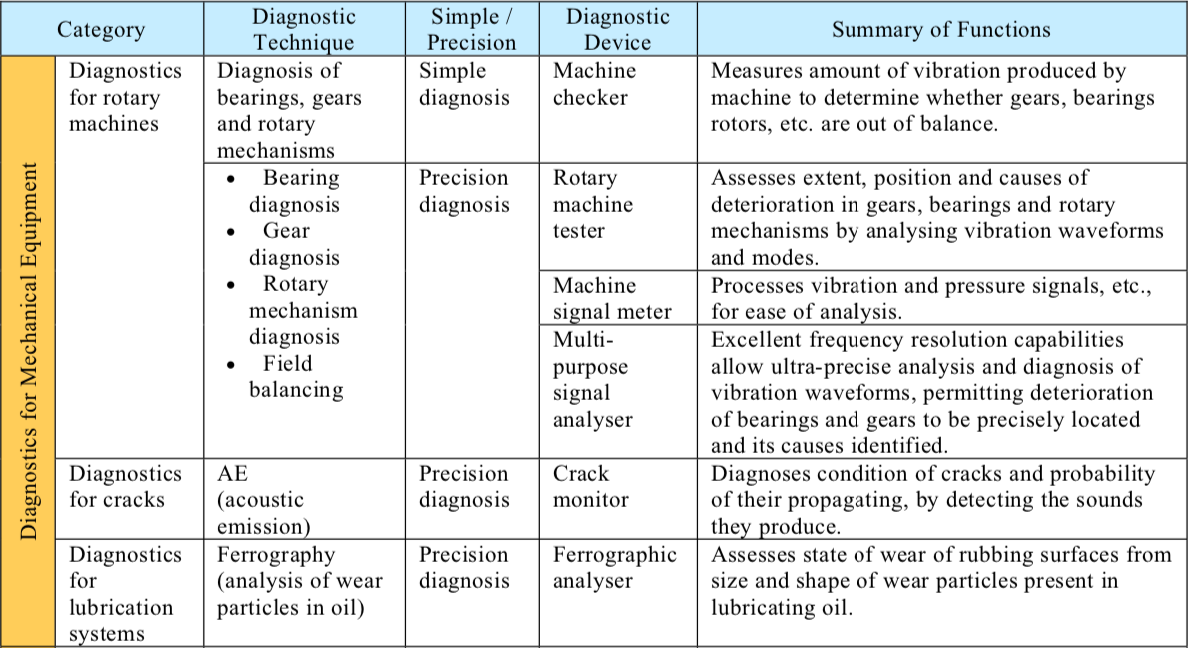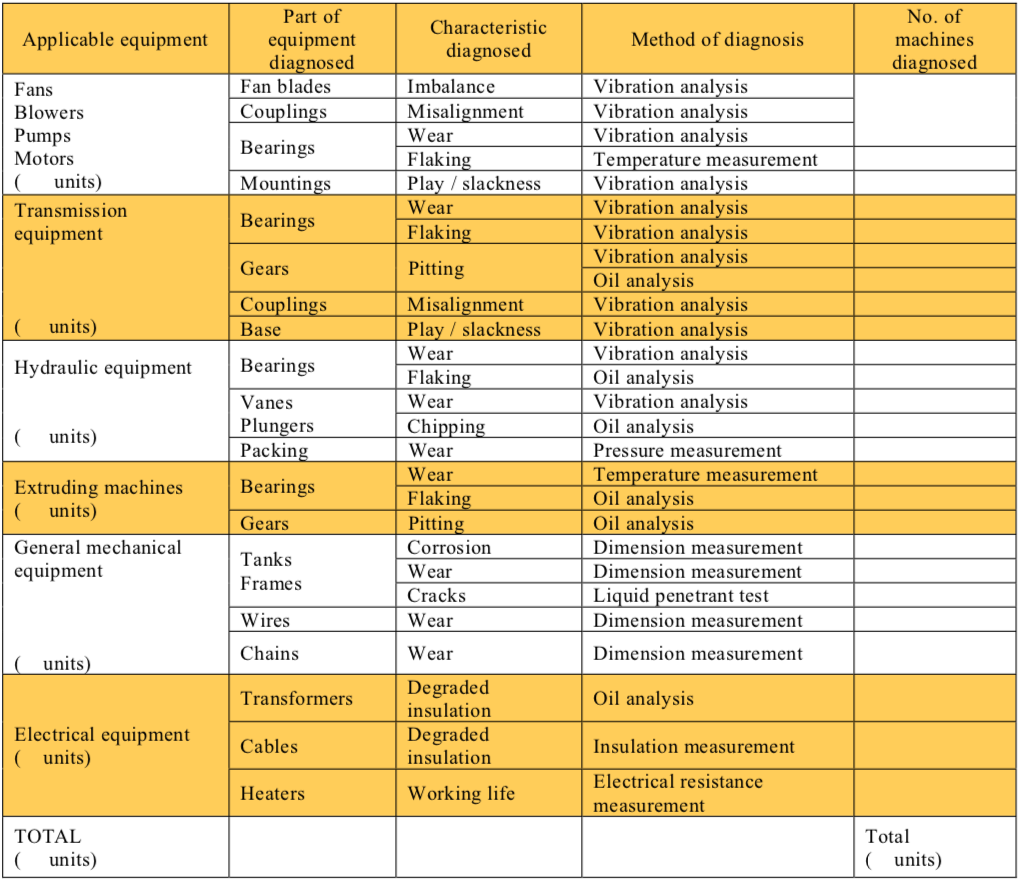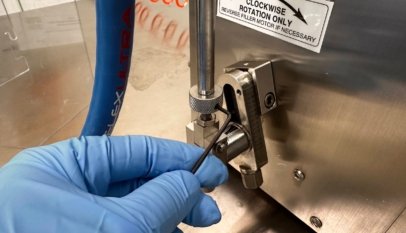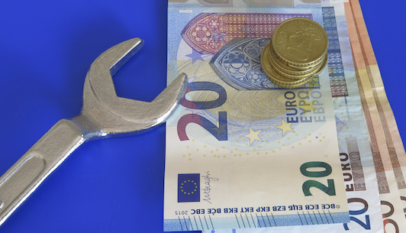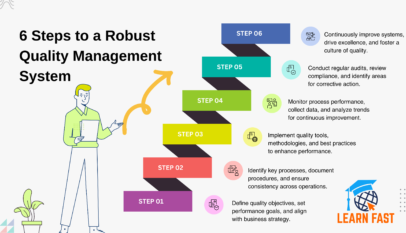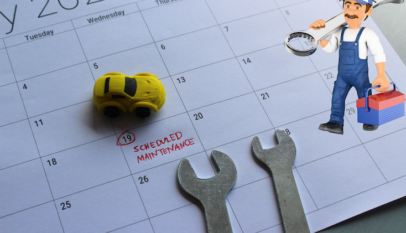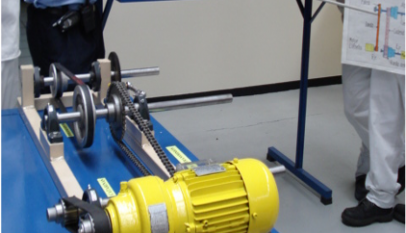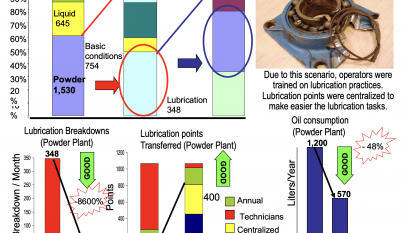Predictive maintenance and equipment diagnostics
Many of the machines and components of which the production plant is composed, fail as a result of initial defects or sudden deterioration, or because they have come to the end of their working life. Even if they do not break down completely, their performance may decline. Failure or underperformance of this kind causes loss of production functions, with consequent effects on production efficiency, product quality and yield, and resource consumption. This can result in significant losses, so it is essential to control and sustain the performance of production equipment and improve it where possible, during the course of regular production activities. The following maintenance methods are generally used to achieve this:
- Breakdown maintenance
- Preventive maintenance
- Corrective maintenance
- Maintenance prevention
- Predictive maintenance
The decision as to which of these maintenance regimes to adopt is determined by considerations such as the basic corporate philosophy, the scale of the production equipment, and the quality and quantity of labor available. In the past, firms generally tended to employ breakdown maintenance, but most have now progressed to preventive or predictive maintenance. They now monitor the state of deterioration of their production equipment and act in advance to ensure that it remains in good condition, thus preventing it from failing. They also do their best to keep up with the times by continually improving and upgrading their equipment based on the latest technological advances, allowing it to perform even better, deliver even better product quality, and be maintained more effectively.
Nevertheless, a review of how preventive maintenance is actually implemented in most companies reveals that they have difficulty in determining the right intervals for equipment overhaul and repair, resulting in either in over-maintenance or in unexpected breakdowns. The concept of predictive maintenance arose from the need to resolve this situation. In predictive maintenance, the mechanisms of equipment failure and deterioration are investigated in great detail, the condition of the equipment during operation is assessed, and the maintenance work done on the equipment is tailored to suit its condition. In other words, potential failures due to deterioration that demonstrates identifiable trends are predicted and dealt with before they can become actual ones.
Advances in the research and development of equipment diagnostics (see Table “Principal Diagnostic Techniques and their Functions”), a key tool for implementing predictive maintenance effectively, are encouraging a general move towards predictive maintenance nowadays. Nevertheless, when deciding what type of maintenance approach to adopt, a good balance must always be sought between the amount that has to be invested in maintenance and the profits that can be gained from production.
